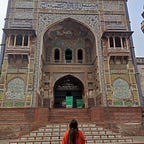Danse Macabre — Dance of the Dead
“Her keyser euch hilft nicht das swert
Czeptir vnd crone sint hy nicht wert
Ich habe euch bey der hand genomen
Ir must an meynen reyen komen”
Translation:
Mr Emperor, the sword doesn’t help you;
Sceptre and crown has no value here.
I have taken you by the hand;
you must come into my dance.
-From Oberdeutscher vierziliger Totentanz
The word ‘Oberdeutscher’ is used to refer to the name of one of many Germanic languages, spoken in the Upper German, and the word ‘vierziliger’ refers to the four lines in each stanza. Together these words make up the verses of a ‘Totentanz’ (German for ‘Dance of the Dead’); a series of artistic depictions in textual or musical forms, used to signify the composer/writer’s fascination with death and what lies beyond.
Since the arrival of The Black Death, the recurring famines and the never-ending conflicts between the Western regions (mostly, France and England); The Middle Ages were rife with hysteria and superstitions of all sorts. An early death was more likely back then, compared to now; and with the impending doom in front of them, the medieval folks turned to eternal salvation and repentance.
There was a stark difference of class in the middle Ages. Be it landholding, education and/or the quality of life; the poor remained poor and the rich got even richer. However, there was one equalizing factor that made no discriminatory advances to anyone within or outside of that range — Death. With the rise of Christianity and the slowly diminishing pagan culture, the ideas of heaven and hell were deeply entrenched within Western society. The Black Death is said to have wiped out almost 60% of the European population, modern medicine wasn’t an option back then — it was either dying of a surgical procedure gone wrong, or dying of the illness itself. A priest was often called to bless those suffering from it and ask Christ himself to rid them of the malignant sickness that had taken over their bodies.
Here is where the concept of ‘memento mori’ comes in. Latin for the expression ‘remember that you must die’ is a concept that is and was used to keep one check about the inevitability of death. Abrahamic texts warn the readers time and time again, of how death is the all-devourer, the destructor of all pleasures. Funerary artwork in most cemeteries dating back to the Middle Ages depict angels snuffing out candles, or a statue of the grim reaper guarding the cemetery entrance. Whatever it was, these mementoes were to keep the people in check, to remind them that Death does not pick and choose, but only takes whom it wills.
‘Danse Macabre’ is perhaps the most famous mementoes of all time. Derived from the Arabic word for cemetery ‘مقابر’ (maqabir), danse macabre is an entire genre itself regarding the strange, albeit understandable fascination with all things that revolved around death itself. Humour can be found in the direst situations, and medieval people knew that quite well. Frescos, murals, paintings and artwork of all sorts can be found; often showing skeletal figures with hands linked together, leading the young the old, the rich and poor to their graves. One of the verses of the Totentanz points this out quite clearly:
“Eyn armer geiler hie ym leben
Czu eynem frunde yst nymande eben
Abir der tot wil seyn frund seyn
Her nympt den armen mit dem reichen hy”
Translation:
A poor beggar here in life;
No one at all is a friend,
but Death will be his friend.
He takes the poor away along with the rich.
The skeletal figure is widely understood to be the representation of the Grim Reaper, a personification of death. In most cases, the Grim Reaper is not just engaging the people in a fatal dance, but instead also leading them to their final destination — Heaven or Hell. The German artist Hans Holbein depicted the dance as a procession of sorts where the victims of the Reaper were involved in everyday tasks when paid a surprise visit by him. The Princes and other nobility were often led to Hell for their lavish, gluttonous lifestyles; and the common man would be led into Heaven for his endurance and hard work. These woodcut images remained as a subject of fascination and were discussed everywhere — their influence spreading all across Europe.
From the 14th to 15th century, there was a radical shift in the religious values itself. It would no longer do to just be a ‘good’ Christian, if not combined with the elements of the ever-present fear of death. Churches across England, Italy and France were paving the road to mass hysteria and sermons were held by preachers speaking animatedly, about the perils of the life and what entails after. Suffice to say, the Middle Ages was not a very fun era to live in. Death was what one would call a ‘cultural emblem’ of the society in those days.
Danse Macabre transcends all cultural, religious and socio-economic barriers. The ‘Dance of Death’ is as relevant today as it was back in the 14th century. Be it the rich, the hungry or the poor, the skeletal figure comes dancing one way or the other. If there’s one thing we can take from this depiction, is that no matter how one goes, there is merriment, there is humour and there is something morbidly hilarious about a stack of bones doing the tango.
